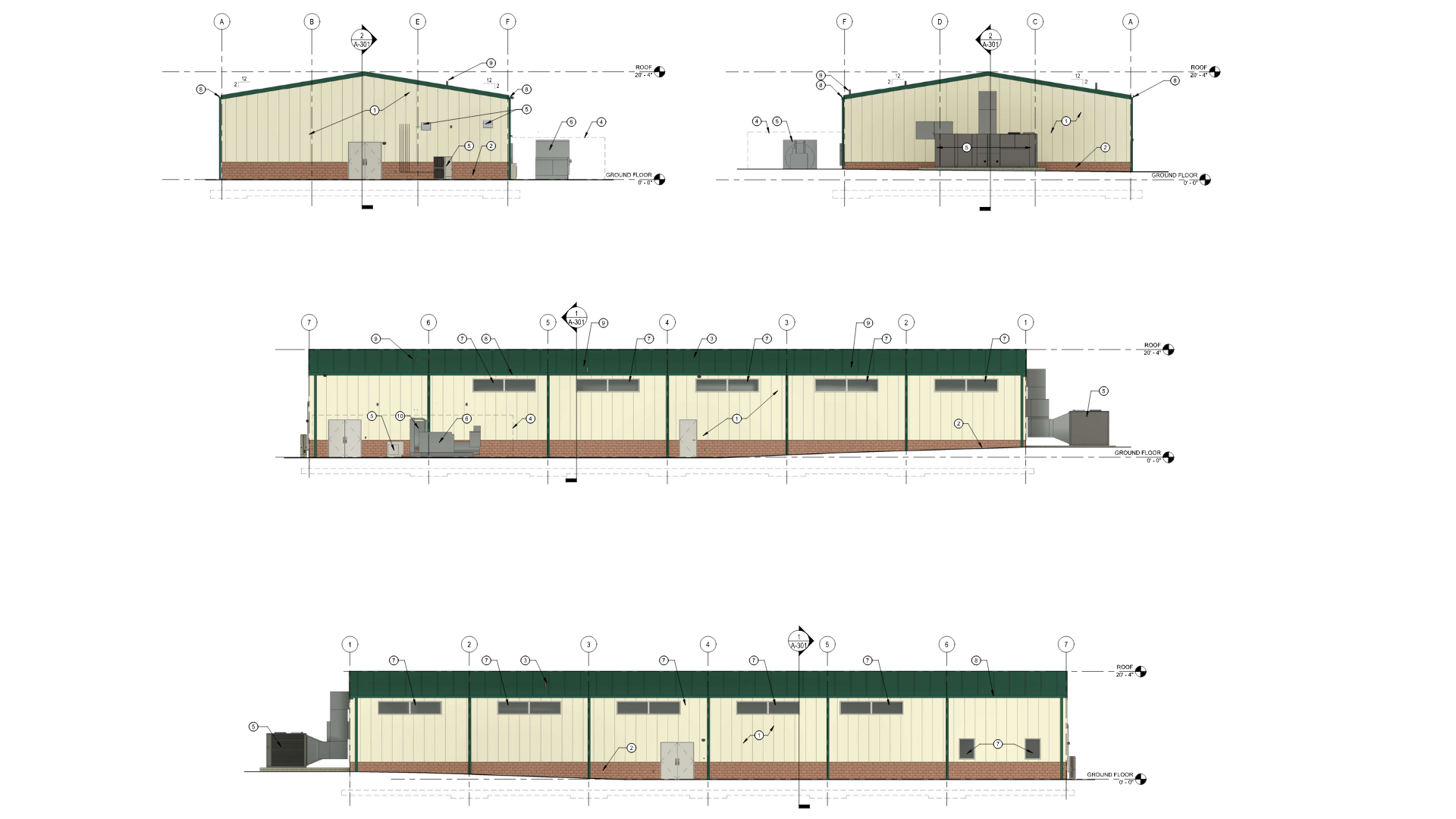The design for the new USDA building in Fort Collins, Colorado, is complete! The USDA will use the building to study Chronic Wasting Disease in the deer population. Most of the structure will be a warehouse space for freezers, which will house the samples used for the study. The remainder will serve as lab and office space for the scientists. The design is complete, and construction will begin in September 2023.
What is the USDA?
The USDA, United States Department of Agriculture, is a federal executive department of the U.S. government. It is responsible for developing and executing farming, agriculture, forestry, and food policies. It was established in 1862 by President Abraham Lincoln.
The USDA’s primary responsibilities include:
-
- Agricultural Production: The USDA promotes agricultural productivity and sustainability through research, education, and various programs to improve crop and livestock production.
- Food Safety: The USDA is responsible for ensuring the safety of the U.S. food supply. This includes inspecting and regulating meat, poultry, and egg products. They also conduct food safety research and provide guidelines for safe food handling.
- Nutrition Assistance: The USDA administers various nutrition assistance programs, including the Supplemental Nutrition Assistance Program (SNAP, formerly known as Food Stamps). SNAP provides eligible low-income individuals and families with assistance to purchase food.
- Rural Development: The USDA supports rural communities by offering loans, grants, and technical assistance to improve infrastructure, housing, and economic opportunities.
- Conservation: The USDA promotes sustainable land use and natural resource conservation through programs that incentivize responsible farming practices, soil and water conservation, and the protection of forests and wildlife.
- Research and Education: The USDA conducts scientific research in agriculture, nutrition, and forestry. It also provides educational resources and funding for research institutions and agricultural universities.
- Trade and Export: The USDA works to expand international markets for U.S. agricultural products by negotiating trade agreements and promoting U.S. exports.
- Animal and Plant Health: The USDA oversees the health of livestock, poultry, and crops. They do this to prevent the spreading diseases and pests that could harm agriculture and the environment.
- Farm Loans and Credit: The USDA provides financial assistance to farmers and ranchers through loans and credit programs. This helps farmers manage their operations, recover from disasters, and improve infrastructure.
- Food Assistance Programs: Besides SNAP, the USDA operates other food assistance programs like the Special Supplemental Nutrition Program for Women, Infants, and Children (WIC) and the National School Lunch Program.
The USDA supports American agriculture, ensures food safety, and promotes rural development and sustainable land use practices.
What is Chronic Wasting Disease?
Chronic Wasting Disease (CWD) is a transmissible neurodegenerative disease that affects deer, elk, moose, and other cervids. It is classified as a prion disease caused by abnormally folded proteins called prions that can trigger similar proteins in the brain to become misfolded, accumulating these misfolded proteins and ultimately causing neurological damage.
CWD is a serious concern for wildlife management and conservation because it can devastate cervid populations. The disease leads to behavioral changes, weight loss, loss of bodily functions, and eventually death.
What is Design-Build?
Design-build is a project delivery method commonly used in the construction industry. It involves a single entity, often a construction firm, responsible for a project’s design and construction phases. This approach contrasts with the traditional design-bid-build method, where separate entities handle the design and construction phases.
Key features of the design-build approach include:
-
- Single Point of Responsibility: In design-build projects, a single entity, known as the design-builder, is accountable for both the design and construction aspects of the project. This streamlines communication, decision-making, and project management.
- Collaboration: Design-build encourages collaboration between designers, engineers, architects, and construction professionals from the project’s inception. This can lead to innovative solutions, efficient designs, and faster project delivery.
- Faster Project Delivery: Since the design and construction phases overlap in design-build projects, construction can often begin before the final design. This can result in faster project completion compared to the sequential design-bid-build approach.
- Cost Control: Design-build can facilitate better cost control since the design-builder estimates costs early in the project. This enables adjustments to the design to meet budget constraints.
- Reduced Claims and Disputes: With a single entity responsible for design and construction, there can be fewer disputes between parties over design intent, responsibility, and project changes.
- Innovation: Collaboration between design and construction professionals can lead to innovative solutions and value engineering. This leads to the suggestion of cost-effective alternatives without compromising quality.
- Flexibility: Design-build allows for changes to be made more easily during construction. The design-builder deeply understands the project and can implement adjustments efficiently.
- Risk Allocation: Risks associated with design errors, delays, and construction issues are often allocated to the design-builder. This will lead to more efficient resolution of problems.
- Client Involvement: The client has a more active role throughout design-build projects. Clients collaborate closely with the design-builder to meet project goals and requirements.
Design-build is particularly advantageous for projects where speed, collaboration, and cost efficiency are key priorities. However, like any project delivery method, it has challenges, such as clear communication and coordination between design and construction teams, potential conflicts of interest, and the importance of selecting an experienced and reputable design-builder.
Overall, the design-build approach aims to create a more streamlined and integrated process for project delivery, resulting in efficient, cost-effective, and high-quality construction projects.
Conclusion
We are grateful to USDA for choosing K-Con as their design-build general contractor. Our passion is to Make the Clients’ Lives and Construction Projects Easy at K-Con. We are excited the design is completed and look forward to starting construction.
If you are interested in a new design-build project, contact K-Con today!

